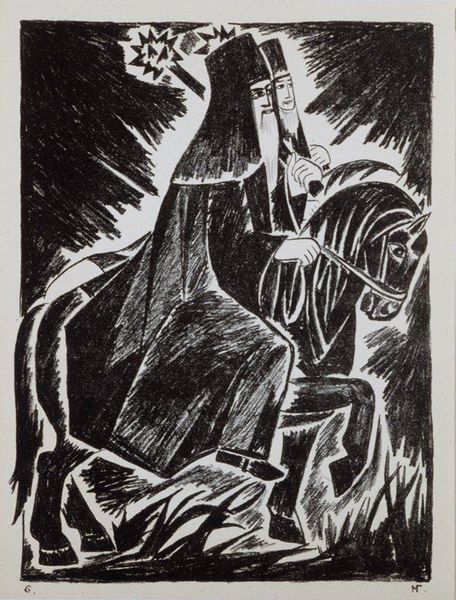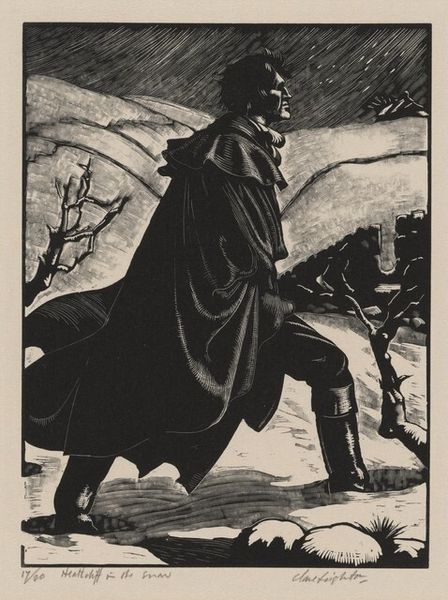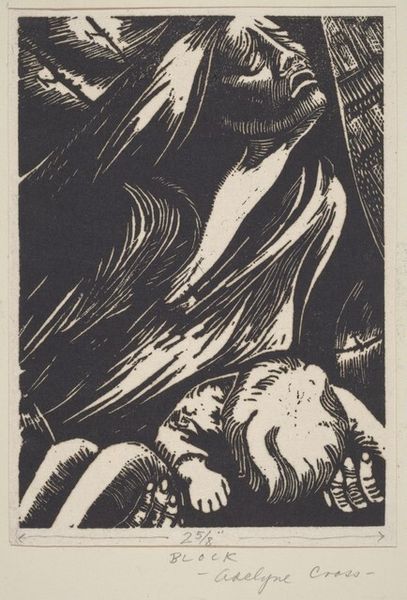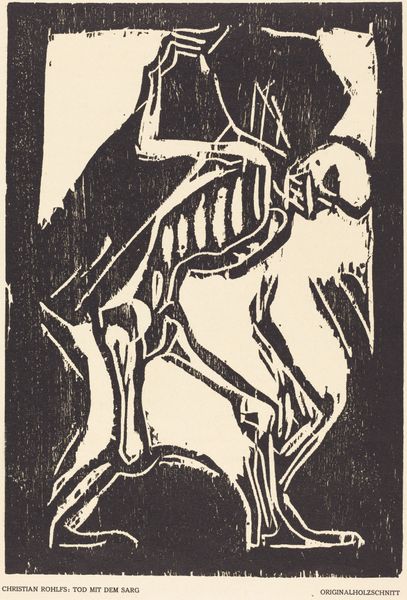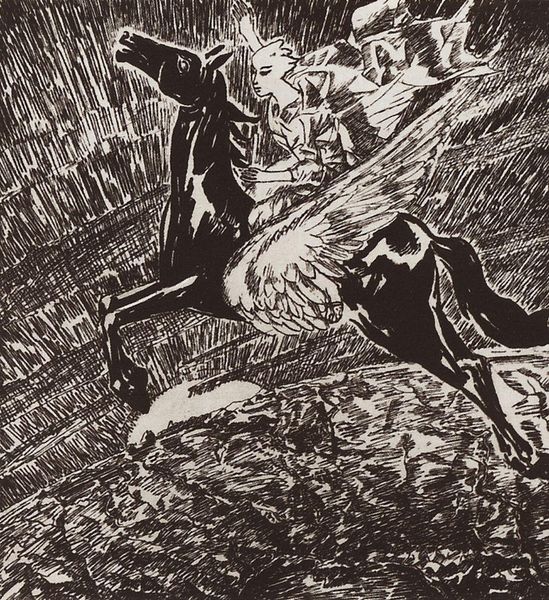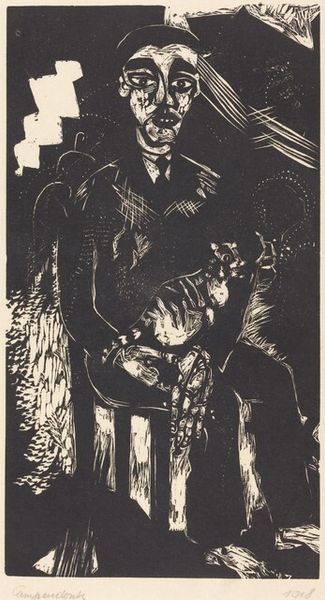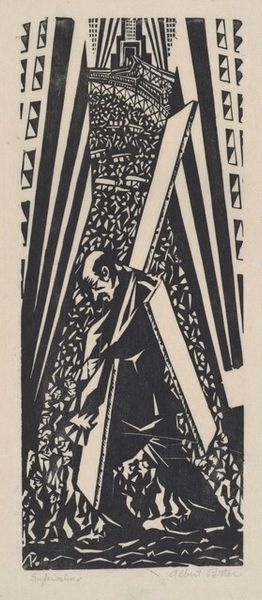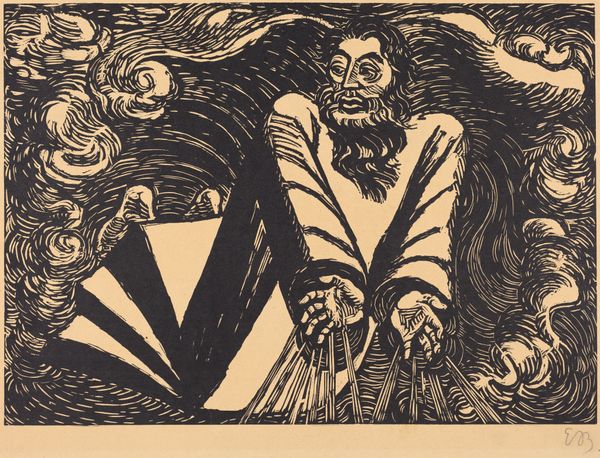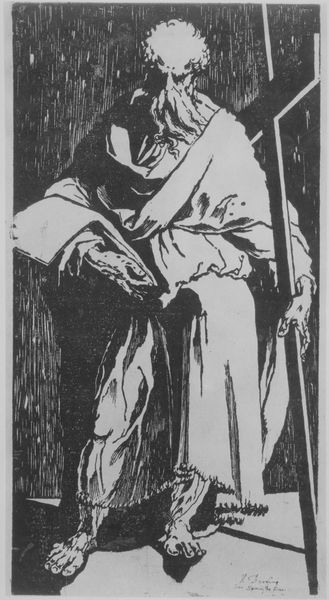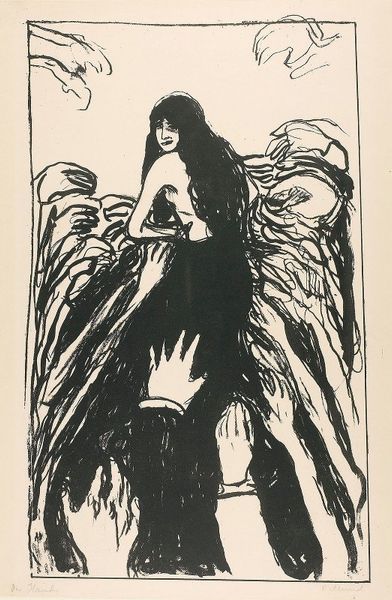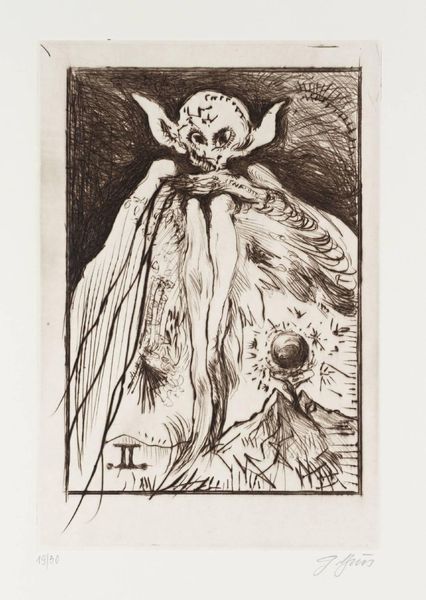
print, woodcut
# print
#
landscape
#
figuration
#
expressionism
#
woodcut
Dimensions: block: 32.9 x 21.6 cm (12 15/16 x 8 1/2 in.) sheet: 50.2 x 35.2 cm (19 3/4 x 13 7/8 in.)
Copyright: National Gallery of Art: CC0 1.0
Editor: Here we have Edvard Munch’s "The Ragman (The Wanderer)," a stark woodcut made between 1908 and 1909. The intense contrast and angular lines create a feeling of isolation, of being trapped, almost claustrophobic, even though it depicts a figure in a landscape. What can you tell me about this print? Curator: What I see here is a potent statement about the marginalized figure, reflecting the social anxieties of Munch's time, but also resonating today. We must consider who is often rendered invisible, forced to the fringes. The rough woodcut medium amplifies the sense of alienation. It denies us the soft edges and comforts of illusion. Look at how the vertical lines almost cage the figure, reinforcing that feeling you described. Do you see a parallel with contemporary discussions around displacement and social exclusion? Editor: Absolutely. It's hard not to think about those struggling on the margins, even today. The figure’s weathered appearance and heavy burden drive that home. It almost feels prophetic. But what about the figures in the background? Curator: Ah, the spectral figures. Munch often uses figures to explore relationships, to speak to emotional connections. But who are they here? Are they merely witnesses or symbols of the internal struggles plaguing our central figure? Are they allies, or do they also exclude this lone individual? Editor: It's unsettling, that ambiguity. So it is open to interpretations, both on social issues as well as individual ones? Curator: Precisely. Munch invites us to consider how societal structures intersect with individual experience, particularly the experience of the 'outsider.' The "Ragman" becomes a mirror reflecting our own responsibilities towards those pushed to the edges of society. Editor: That’s a powerful lens to view it through. It encourages reflection on our role in creating a more inclusive space. I never thought about a Munch this way before! Curator: Art challenges us; it disrupts and it allows us to feel as well as consider change, even now.
Comments
No comments
Be the first to comment and join the conversation on the ultimate creative platform.
